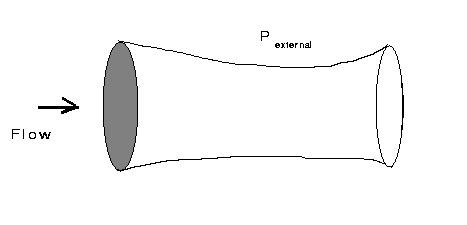
The collapse of compressed elastic tubes conveying a flow occurs in several physiological applications and clinical devices: for example, arteries are collapsed during sphygmomanometry, and large bronchi collapse during forced expiration. Experiments on such a system have revealed a rich variety of self-excited oscillations that exist in such flows, demonstrating that the system is a nonlinear dynamical system of great complexity. Several one-dimensional and lumped-parameter theoretical models have been proposed, revealing different mechanisms by which oscillations can be generated or maintained. However, due to the crude approximations that have to be used in such models, there is as yet no complete theoretical description of the oscillations in any realizable experimental conditions.
The Objectives and aims of this project:
(a) To understand the mechanisms of self-excited oscillations in flow in collapsible channels using numerical methods.
(b) To interpret the results by comparing with results from experiments.
(c) To apply the results to physiological phenomena, notably in blood vessels and bronchi.
Recently, we discovered that there is a cascade stability structure in the system: depends on the parameters,the system can undergo interesting mode-2, mode-3, and mode-4 oscillations as wall stiffness is reduced. During the mode switch, it is also possible for the system to be re-stabilized. The animations below show how, when the effective tension is lowered gradually at Re=400, the system switches from mode-2 oscillations to mode-3 oscillations, sandwiched by a stability zone.
Mode-2 oscillation at u3
Mode-2 oscillation at u2
Mode-switch & stabilize
Mode-3 oscillation at u1
This work is in collaboration with Professor T J Pedley, FRS at DAMTP, University of Cambridge, and Prof. Z.X. Cai at Tianjin University, China. The project is funded by the EPSRC grant (Ref. GR/M07243) and the Royal Society of London (Ref 2005/R4-JP).
Move up to Prof. X. Y. Luo